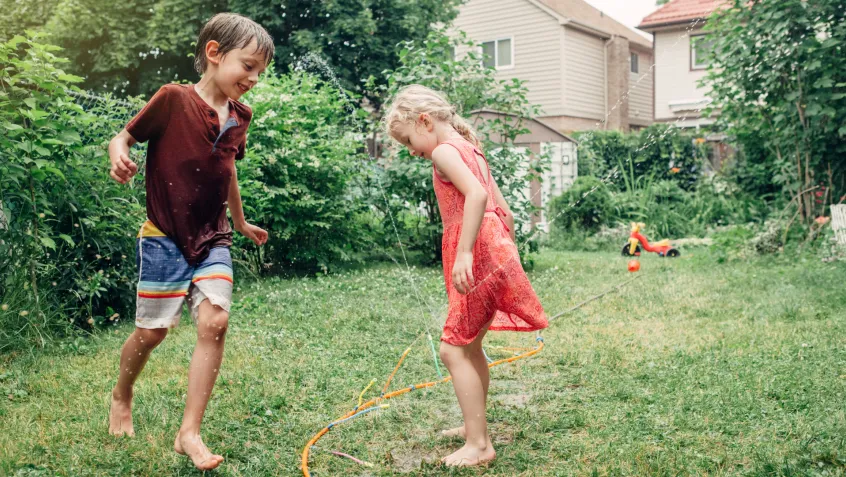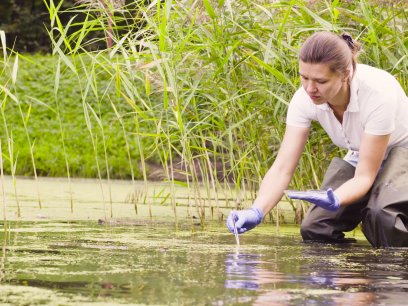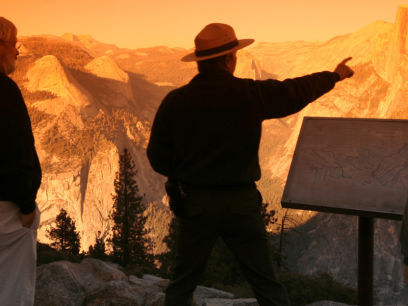
If you’ve ever felt the warmth of a sunny day or taken a deep breath of fresh air while hiking a mountain trail, you have experienced firsthand the mental and physical health benefits of nature.
“People often recognize that nature feels restorative, but it’s just as important to understand the science behind those benefits,” said Dr. Sharon Stokes-Williamson, Program Director of Health at NEEF. “Helping people become more aware of what they’re feeling can be the first step to improving well-being.”
There is a growing body of research that shows how green spaces reduce stress and improve the mental health of people of all ages. One 2009 study found that “doses'' of nature can be as effective as medication to temporarily improve concentration for children with ADHD. Another study found that greener settings reduce emotional dysregulation and aggression. Spending time in nature can also be healing for former members of the armed forces experiencing post-traumatic stress disorder.
To help get more people outside, NEEF developed a Health & Wellness engagement guide in partnership with the USDA Forest Service (USFS) and National Park Service (NPS) filled with real-world examples of environmental education activities that make the connection between nature and health. The guide also provides an introduction to activities like forest bathing, which is popular internationally but less known in the United States.
Understanding the Connection Between Climate and Mental Health
NEEF’s Climate Mental Health Initiative connects healthcare professionals and educators with resources to use green spaces as a tool for mental wellness. The project builds on our organization’s past and ongoing work—such as our Greening STEM place-based education approach—to make the environment more accessible, relevant, and connected to people's daily lives.
Our work in this space recognizes that climate change is not just an environmental or scientific issue—it’s also an emotional one. As extreme weather events grow in frequency and intensity, more communities are facing direct impacts, from property damage to climate-related displacement. These experiences can have lasting effects on mental health, particularly for young people.

Why Emotional Support Belongs in Climate Education
With climate change no longer a distant concept but a lived experience, today’s students are growing up amid a steady stream of sobering headlines and firsthand exposure to environmental shifts. According to a 2024 pilot study by the Climate Mental Health Network (CMHN) and NEEF, 83% of teachers say their school community has been affected by an extreme weather event. This emotional proximity to the climate crisis is reshaping what students need from their education—and from the educators who guide them.
To support this need, NEEF and CMHN co-developed the Climate Emotions Toolkit for Educators, the first evidence-based, teacher-tested resource specifically designed to help middle school educators address the emotional side of climate change in the classroom. The toolkit equips teachers with activities and reflective tools that support both student well-being and their own mental health.
The research speaks volumes. In a national survey, 98% of teachers said they’ve encountered emotional reactions from students while teaching climate-related topics—but most reported feeling unequipped to help students cope. This toolkit helps fill that gap with an educator’s guide, mindfulness resources, and classroom activities aligned with science standards.
“Before we can help others process their climate emotions, we have to first understand and manage our own,” said Dr. Stokes-Williamson, reflecting on insights shared during a recent climate emotions webinar. “Emotional resilience starts with self-awareness, and recognizing those feelings is the first step to acting on them meaningfully.”
These tools can help students name and normalize their feelings while staying engaged and hopeful. By fostering emotional awareness alongside scientific understanding, the Climate Emotions Toolkit has become a trusted resource for educators seeking to create more supportive and responsive classrooms.

Bringing Climate Education to Life in the Classroom
Early feedback from educators has been overwhelmingly positive: 100% of teachers who used the Climate Emotions Toolkit said they would recommend it to a colleague, and 97% said they are likely to use the activities again. As one New Jersey teacher shared, “The activities got my students thinking about their emotions in a very productive and meaningful way. They also made it easy to lead good discussions and help me understand each individual student better.”
Perhaps most importantly, the toolkit reinforces an essential message: experiencing eco-anxiety, sadness, or even fear is a sign that students care about the planet and want to protect it. These emotions aren’t obstacles to learning—they are invitations to deeper reflection, greater compassion, and more meaningful action.
By addressing emotional wellness alongside science education, the Climate Emotions Toolkit gives students and educators alike the tools they need to navigate a changing world with resilience, purpose, and hope.
“It can be easy to push self-care to the side, but spending time in nature—even for just a few minutes—can reset your perspective and support emotional balance,” said Dr. Stokes-Williamson. “Taking a moment to slow down is essential, especially in the face of chronic stressors like climate change.”
Learn More About the Benefits of Environmental Education and Access to Nature
Ready to experience the many health benefits of the outdoors for yourself? Remember: connecting with nature is not one-size-fits-all.
The following environmental education resources are full of useful information for incorporating the outdoors into lesson plans, health care regimens, and your daily life:
- Public Lands Engagement - Health & Wellness Guide: Experts from NEEF, the USFS, and NPS share strategies for planning and executing successful health and wellness activities on public lands of all types and sizes.
- Nature Champion Online Course: This free, self-paced training builds capacity among healthcare providers and mental health professionals to “prescribe nature” and connect families—especially in under-resourced communities—with the outdoors. Modules cover the physical and mental health benefits of nature, strategies for partnership-building, and practical case studies.
- Benefits of Environmental Education: Environmental education is often lauded by educators as an ideal way to integrate academic disciplines, stimulate the academic and social growth of young people, and promote conservation of the natural environment. This article cites specific academic sources to illustrate the many ways that environmental education benefits students.
- Start a Community Garden to Grow Healthy Food and New Neighborhood Connections: Learn how community gardens can increase access to nutritious food, strengthen local bonds, and provide restorative green spaces—especially in areas where nature is limited.


